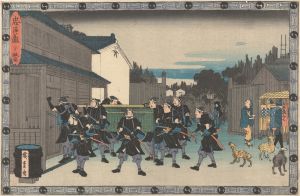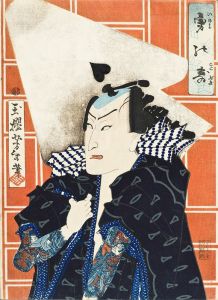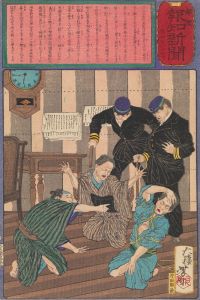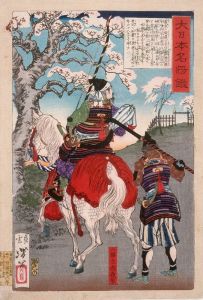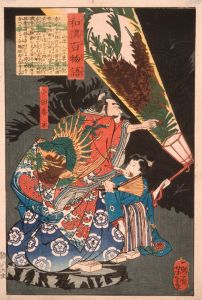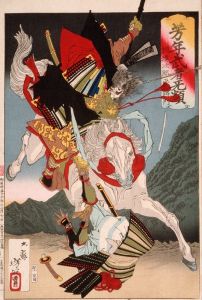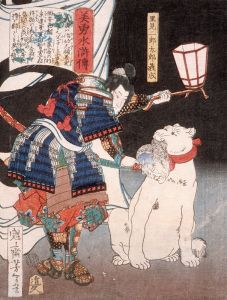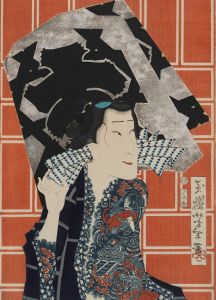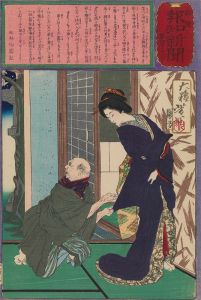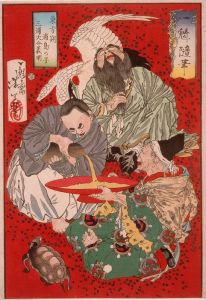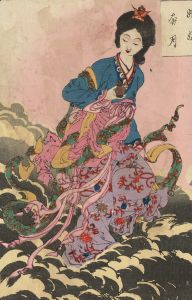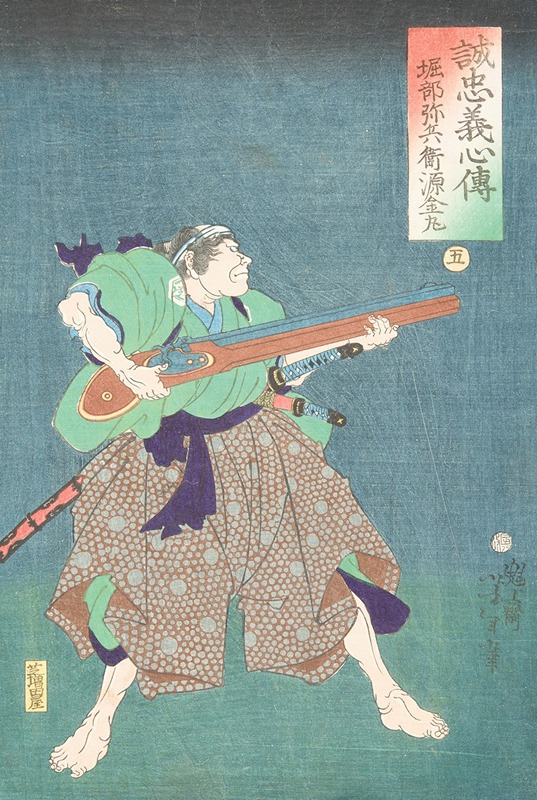
Horibe Yahei Minamoto Kanemaru
A hand-painted replica of Tsukioka Yoshitoshi’s masterpiece Horibe Yahei Minamoto Kanemaru, meticulously crafted by professional artists to capture the true essence of the original. Each piece is created with museum-quality canvas and rare mineral pigments, carefully painted by experienced artists with delicate brushstrokes and rich, layered colors to perfectly recreate the texture of the original artwork. Unlike machine-printed reproductions, this hand-painted version brings the painting to life, infused with the artist’s emotions and skill in every stroke. Whether for personal collection or home decoration, it instantly elevates the artistic atmosphere of any space.
Tsukioka Yoshitoshi was a renowned Japanese artist known for his woodblock prints and paintings during the late Edo and early Meiji periods. One of his notable works is "Horibe Yahei Minamoto Kanemaru," which is part of his series "One Hundred Aspects of the Moon" (Tsuki Hyakushi). This series, created between 1885 and 1892, is celebrated for its innovative use of traditional ukiyo-e techniques to explore themes of history, legend, and the supernatural, all unified by the motif of the moon.
"Horibe Yahei Minamoto Kanemaru" depicts a historical figure associated with the famous tale of the Forty-seven Ronin, also known as the Ako Incident. This event took place in the early 18th century and involved a group of samurai who avenged the death of their master, Asano Naganori. Horibe Yahei, one of these ronin, is portrayed in Yoshitoshi's print, capturing a moment that reflects both the bravery and the tragic fate of these loyal warriors.
Yoshitoshi's work is characterized by its dynamic composition and expressive use of color, which were innovative at the time. In this particular print, the artist employs a dramatic contrast between light and shadow, emphasizing the moonlit scene. The moon, a recurring symbol in the series, serves as a backdrop that enhances the emotional intensity of the narrative.
The "One Hundred Aspects of the Moon" series is significant not only for its artistic merit but also for its cultural and historical references. Yoshitoshi drew inspiration from classical literature, folklore, and historical events, weaving them into a cohesive collection that resonated with contemporary audiences. His ability to blend traditional Japanese aesthetics with modern sensibilities made his work appealing to both domestic and international audiences.
Yoshitoshi's career spanned a period of great change in Japan, as the country transitioned from the feudal Edo period to the modern Meiji era. His work reflects this transformation, as he incorporated Western artistic influences while maintaining a strong connection to Japanese tradition. This synthesis of styles is evident in "Horibe Yahei Minamoto Kanemaru," where the detailed depiction of the samurai's attire and the atmospheric setting showcase Yoshitoshi's mastery of the woodblock print medium.
The legacy of Tsukioka Yoshitoshi and his "One Hundred Aspects of the Moon" series continues to be celebrated today. His prints are highly sought after by collectors and are featured in major museum collections worldwide. Yoshitoshi's ability to capture the essence of his subjects, combined with his technical skill and innovative approach, has secured his place as one of the last great masters of the ukiyo-e tradition.
In summary, "Horibe Yahei Minamoto Kanemaru" by Tsukioka Yoshitoshi is a significant work that exemplifies the artist's unique style and his contribution to the ukiyo-e genre. Through this print, Yoshitoshi not only commemorates a historical event but also explores universal themes of loyalty, honor, and the passage of time, all under the watchful gaze of the moon.





